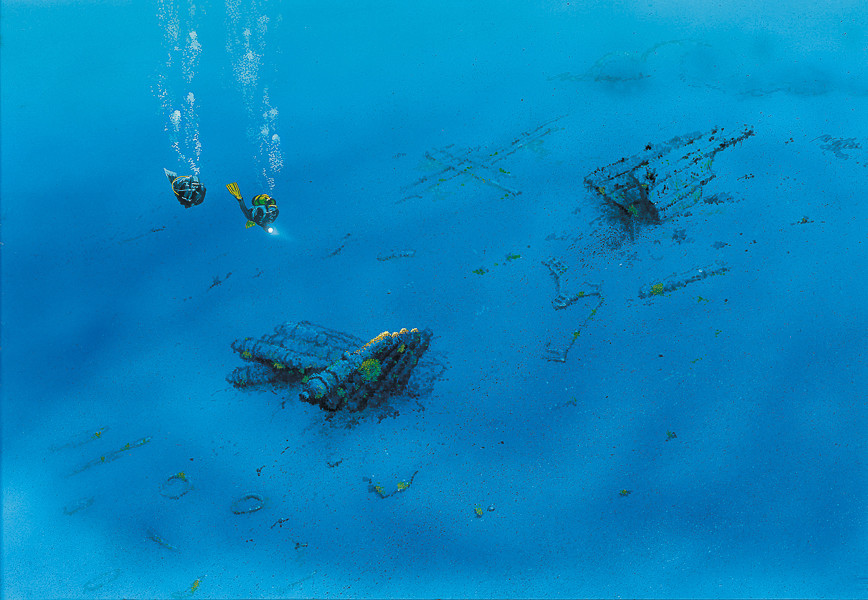
SAILING SHIP WITH A CARGO OF CANNONS
DEPTH: 29 - 42 m
SKILL: Advanced
Cargo sailing ship, wooden construction
Built: 19th century (?)
Sunk: unknown (probably bad weather)
Dimensions: about 30 x 6 m
Coordinates: 44.98077° N, 14.53667° E
Location: NE side of the Krnjacol peninsular, island of Plavnik
Access: 2/5 access is possible solely by boat (the location is alongside the uninhibited island of Plavnik)
Visibility: 4/5 mostly very good visibility
Current: 4/5 weak, only occasionally moderate
Flora and fauna: 4/5 varied life on and around the wreck
HISTORY:
Unfortunately very little is known about this sailing ship, as is the case with other wooden ships whose wreck sites are known. The location was found at the beginning of the 1980’s when one diver from Krk reported finding a pile of iron cannons on the seabed not far from the coast of the island of Plavnik. The team of archaeologists which came to the site confirmed that the remains were of a sailing ship which was transporting cannons. The wooden hull of the ship was completely broken up, and on the sandy slopes there was a pile of iron cannons – the cargo which the unlucky ship was transporting and some parts of the ship’s equipment. According to the appearance of the cannons it was concluded that the ship was most likely from the 19th century, from the time of the Napoleonic Wars. The ship perished on the rocks of Plavnik probably because of a very powerful storm which threw it onto the steep cliffs of the Krnjacol peninsular. The cargo of cannons which it was transporting never arrived at its destination, which we can only assume was one of the coastal forts which the French had built to defend its conquered areas. It is not ruled out that the ship may have perished later, after the wars, when cannons were transported as scrap iron from fortifications to foundries.
Considering the condition of the finds (the removal and preservation of steel cannons is expensive and complicated) it was decided not to explore the site any further, but to allow tourists to dive on it.
WRECK CONDITION AND DIVING:
It is best to start diving in the cove which is located at the southern part of the Krnjacol peninsular. Just after a short swim, some twenty metres after the cape, descending to the steep sandy bottom at a depth of 29 metres we arrive at the first remains of the ship. These are parts of the wooden hull, which are covered with metal plates. Somewhat deeper masses of very overgrown metal parts can be seen, between which can be easily identified as the mast mountings. Going deeper we come across the cannons, which have mostly remained in the position during the sinking of the ship. Around 14 of them can be seen and they are all made of iron (bronze cannons are significantly less overgrown and are easily distinguishable). It can be seen that the cannons were neatly stacked in the ship’s hold, but with the decomposition of the ship’s hull their arrangement was slightly disturbed. All of them are overgrown with a thick layer of crustaceans and algae, and around them can often be seen shoals of two-banded breams which linger nearby. Further towards the depths there are more pieces of wood and ship equipment, but the objects are so overgrown that their true forms will soon be indiscernible. After viewing the ship’s remains it is easy, by diving, to return to the cove from where we started. Visibility is always very good, and often excellent as well as, the depths of diving also allows the use of nitrox, and so diving on this site is a real experience.
The description and illustrations are a courtesy of Danijel Frka and Jasen Mesić. Buy the whole book here: https://shop.naklada-val.hr/product_info.php?products_id=561
Built: 19th century (?)
Sunk: unknown (probably bad weather)
Dimensions: about 30 x 6 m
Coordinates: 44.98077° N, 14.53667° E
Location: NE side of the Krnjacol peninsular, island of Plavnik
Access: 2/5 access is possible solely by boat (the location is alongside the uninhibited island of Plavnik)
Visibility: 4/5 mostly very good visibility
Current: 4/5 weak, only occasionally moderate
Flora and fauna: 4/5 varied life on and around the wreck
HISTORY:
Unfortunately very little is known about this sailing ship, as is the case with other wooden ships whose wreck sites are known. The location was found at the beginning of the 1980’s when one diver from Krk reported finding a pile of iron cannons on the seabed not far from the coast of the island of Plavnik. The team of archaeologists which came to the site confirmed that the remains were of a sailing ship which was transporting cannons. The wooden hull of the ship was completely broken up, and on the sandy slopes there was a pile of iron cannons – the cargo which the unlucky ship was transporting and some parts of the ship’s equipment. According to the appearance of the cannons it was concluded that the ship was most likely from the 19th century, from the time of the Napoleonic Wars. The ship perished on the rocks of Plavnik probably because of a very powerful storm which threw it onto the steep cliffs of the Krnjacol peninsular. The cargo of cannons which it was transporting never arrived at its destination, which we can only assume was one of the coastal forts which the French had built to defend its conquered areas. It is not ruled out that the ship may have perished later, after the wars, when cannons were transported as scrap iron from fortifications to foundries.
Considering the condition of the finds (the removal and preservation of steel cannons is expensive and complicated) it was decided not to explore the site any further, but to allow tourists to dive on it.
WRECK CONDITION AND DIVING:
It is best to start diving in the cove which is located at the southern part of the Krnjacol peninsular. Just after a short swim, some twenty metres after the cape, descending to the steep sandy bottom at a depth of 29 metres we arrive at the first remains of the ship. These are parts of the wooden hull, which are covered with metal plates. Somewhat deeper masses of very overgrown metal parts can be seen, between which can be easily identified as the mast mountings. Going deeper we come across the cannons, which have mostly remained in the position during the sinking of the ship. Around 14 of them can be seen and they are all made of iron (bronze cannons are significantly less overgrown and are easily distinguishable). It can be seen that the cannons were neatly stacked in the ship’s hold, but with the decomposition of the ship’s hull their arrangement was slightly disturbed. All of them are overgrown with a thick layer of crustaceans and algae, and around them can often be seen shoals of two-banded breams which linger nearby. Further towards the depths there are more pieces of wood and ship equipment, but the objects are so overgrown that their true forms will soon be indiscernible. After viewing the ship’s remains it is easy, by diving, to return to the cove from where we started. Visibility is always very good, and often excellent as well as, the depths of diving also allows the use of nitrox, and so diving on this site is a real experience.
The description and illustrations are a courtesy of Danijel Frka and Jasen Mesić. Buy the whole book here: https://shop.naklada-val.hr/product_info.php?products_id=561

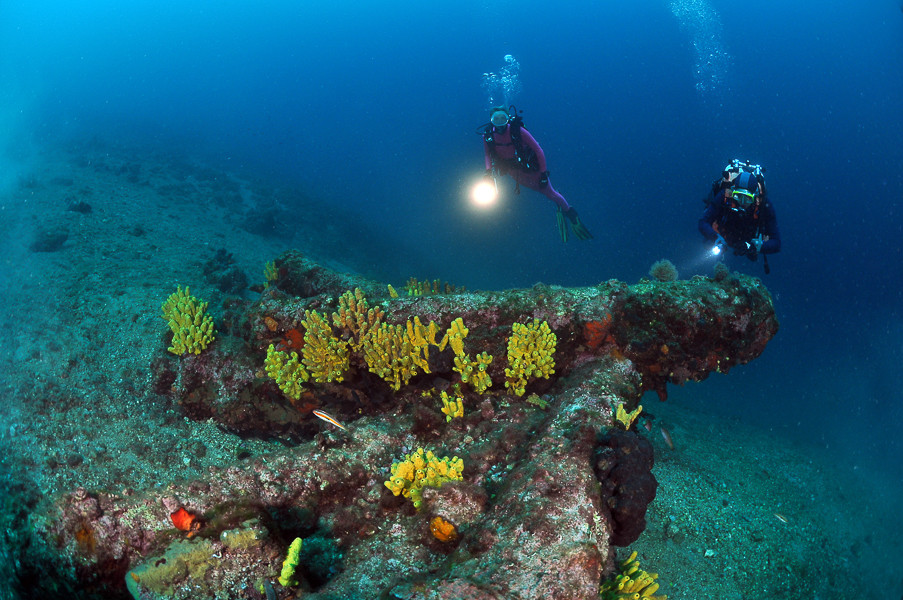
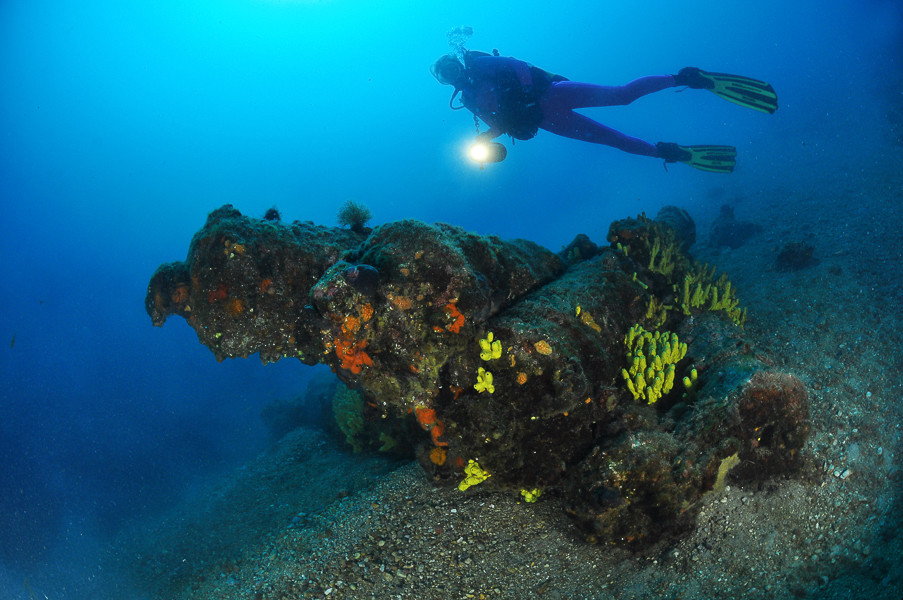
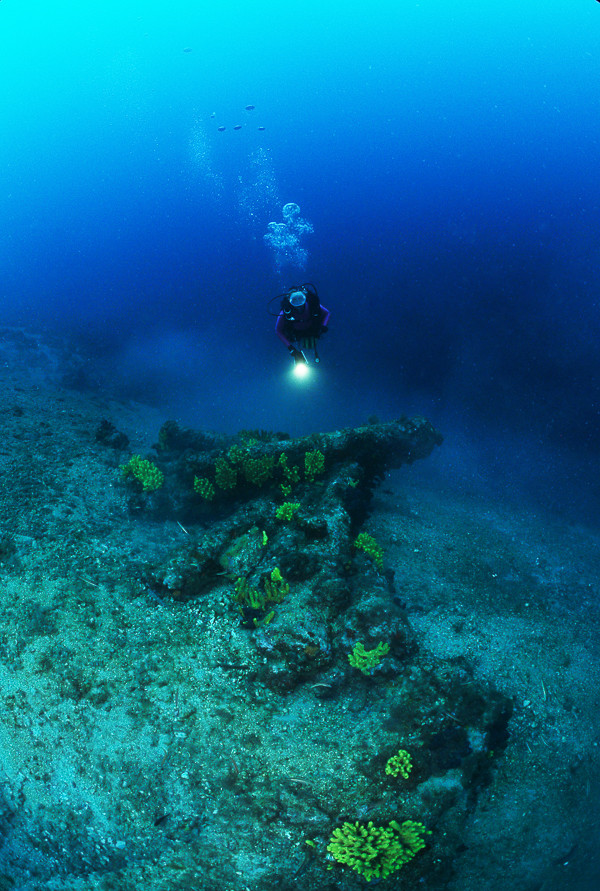
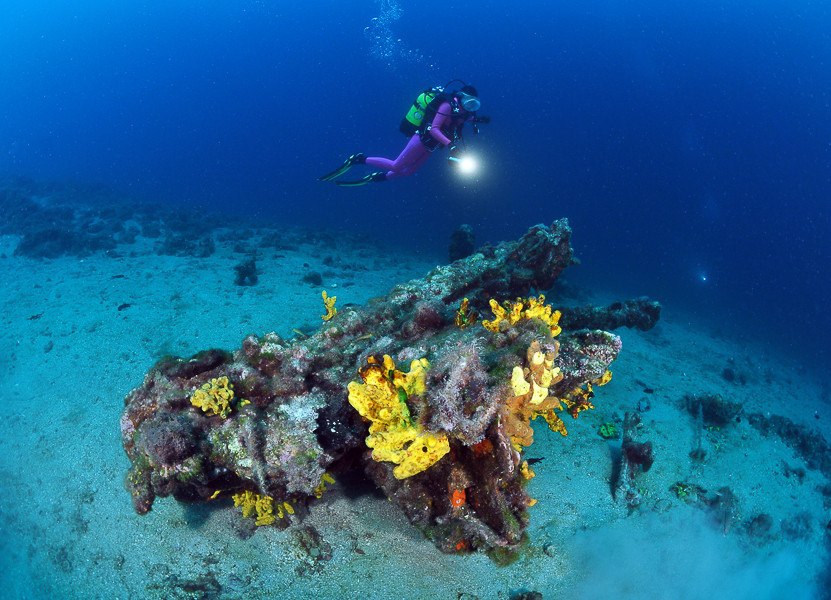

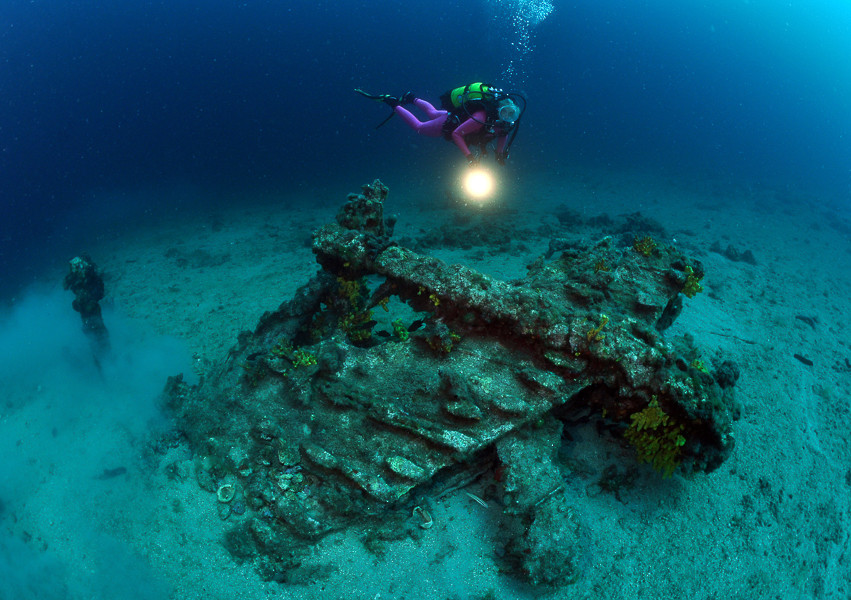
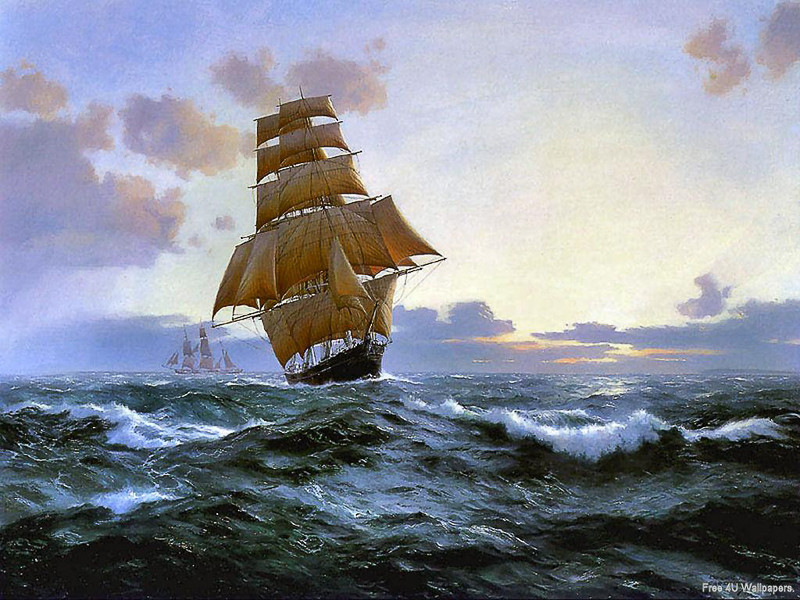
 The investment is co-financed by the Republic of Slovenia and the European Union from the European Regional Development Fund.
The investment is co-financed by the Republic of Slovenia and the European Union from the European Regional Development Fund.  H2O Globe BETA
H2O Globe BETA